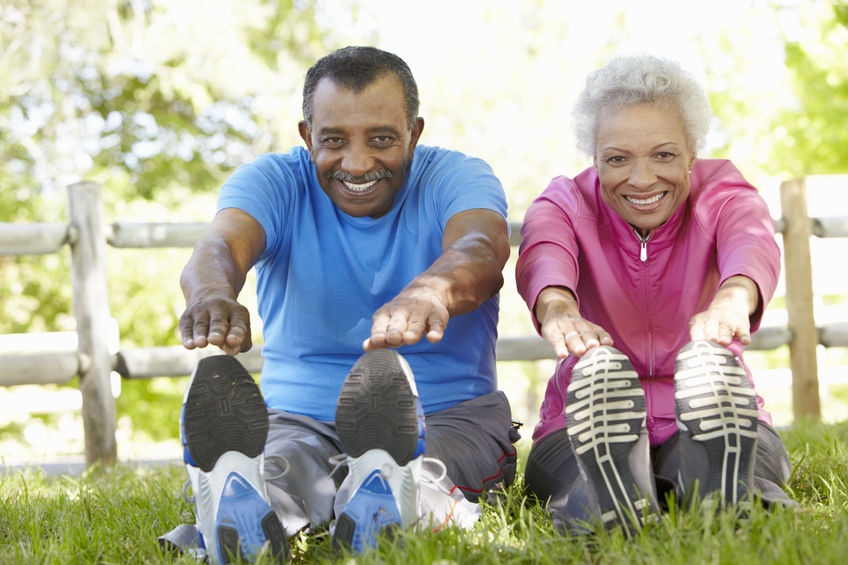Exercise helps control you blood glucose level by:
improving your body’s utilization of insulin,
lessening your weight (which thus further improves your insulin affectability),
lessening pressure (which is one reason for insulin harshness), and
bringing down your circulatory strain and cholesterol levels (the two of which are connected with diabetes in the metabolic disorder).
In a solid individual, insulin is delivered from the pancreas when the measure of glucose in the blood increments, for example, subsequent to eating. Insulin opens the receptors in your muscle cells so the overabundance glucose can get into the cells. Subsequently, after it tops, your blood glucose level falls.
The impacts of activity
When working out, be that as it may, your muscle cells need additional vitality or fuel (as glucose). For short explosions of activity, for example, a fast run for a transport, your liver deliveries stores of glucose which your circulatory system transports to your muscles.
With nonstop moderate working out, your muscles take in glucose at up to multiple times their typical rate. This assists lower with blooding sugar levels as the glucose vanishes into the cells.
Simultaneously, as the glucose in your circulation system lessens, your insulin levels drop (if you are not taking insulin), diminishing the progression of sugar into your muscle cells. Along these lines the danger of hypoglycaemia (a fall in blood glucose to hazardously low levels) is limited.
Then again, serious exercise (practice that makes you break out in a perspiration and raises your pulse) can have the contrary impact. You may find that your blood glucose levels are briefly expanded following you quit working out.
This is on the grounds that your body perceives exceptional exercise as a pressure and deliveries stress hormones that advise your body to expand the glucose accessible to fuel your muscles. This thus causes your glucose to shoot up to a pinnacle and afterward drop.
After extraordinary or continuance type work out, your glucose level can stay low for 24 to 48 hours.
This is fine, as long as it doesn’t drop much beneath 3.9mmol/L (70mg/dl), which is the threat point for hypoglycaemia.
Eating a nibble before you start practicing may help neutralize this. What’s more, obviously, you should check your glucose previously, during, and after you work out.
Sorts of activity
There are a lot of activities that are particularly helpful for diabetics and which you can do at home gave you have some versatile exercise groups and cross-coach. There’s no compelling reason to go to a rec center.
Obstruction preparing is a sort of activity that utilizes protection from prompt your muscles to contract. This manufactures the quality, continuance and size of your muscles. You can do such an activity at home utilizing flexible exercise groups folded over a step post or something comparative.
This type of solidarity preparing constructs your bulk so you use glucose all the more proficiently. It additionally expands your digestion, improves your cardiovascular wellbeing, brings down your circulatory strain and decreases your stomach fat.
Stretch preparing includes substituting episodes of high-power movement with less exceptional work. You can, for instance, pedal rapidly on a cross-coach for 30 seconds and afterward go at a more slow speed for 90 seconds.
Substituting the speed and power of the exercise difficulties you muscles. This helps consume more calories, supports your wellness and improves your insulin affectability.
Exercise for diabetics
An inactive presence with almost no activity infers that your muscles are not consuming glucose or calories. On the off chance that you begin working out, your muscles will start to go through your glucose and calories.
For diabetics, in my view, a lot of moderate exercise is ideal. Undertaking some type of activity is simple. A large number of the errands you do around the house, for example, cleaning or cutting the grass, include moderate exercise and are helpful.
Strolling is an astounding type of moderate exercise, if you do it for in any event 30 minutes per day. Here are a couple of straightforward stunts to get your strolling time in.
In the event that you live in a condo, renounce the lift for the steps once every day, for at any rate two stairwells. Stroll to the market as opposed to driving, or park your vehicle as distant as conceivable from the passageway to your nearby grocery store.
Clearly more serious exercise will improve your blood glucose levels much more than moderate working out. Anyway you have to remember that your blood glucose levels can keep dropping for as long as 48 hours subsequent to working out.
Beginning an activity program
On the off chance that you have not had any activity for a considerable length of time, you should converse with your PCP before you start.
On the off chance that you have heart issues, you may require a pressure test as an insurance. On the off chance that you have hypertension, you have to ensure that your pulse is steady. In the event that you have issues with your retina, your primary care physician ought to have the option to mention to you what activities to keep away from all together not to force pressure on your retina.
On the off chance that you have issues with your bones, for example, back issues or knee torment, an activity physiologist can show you proper activities, for example, how to utilize a prostrate fixed bicycle.







